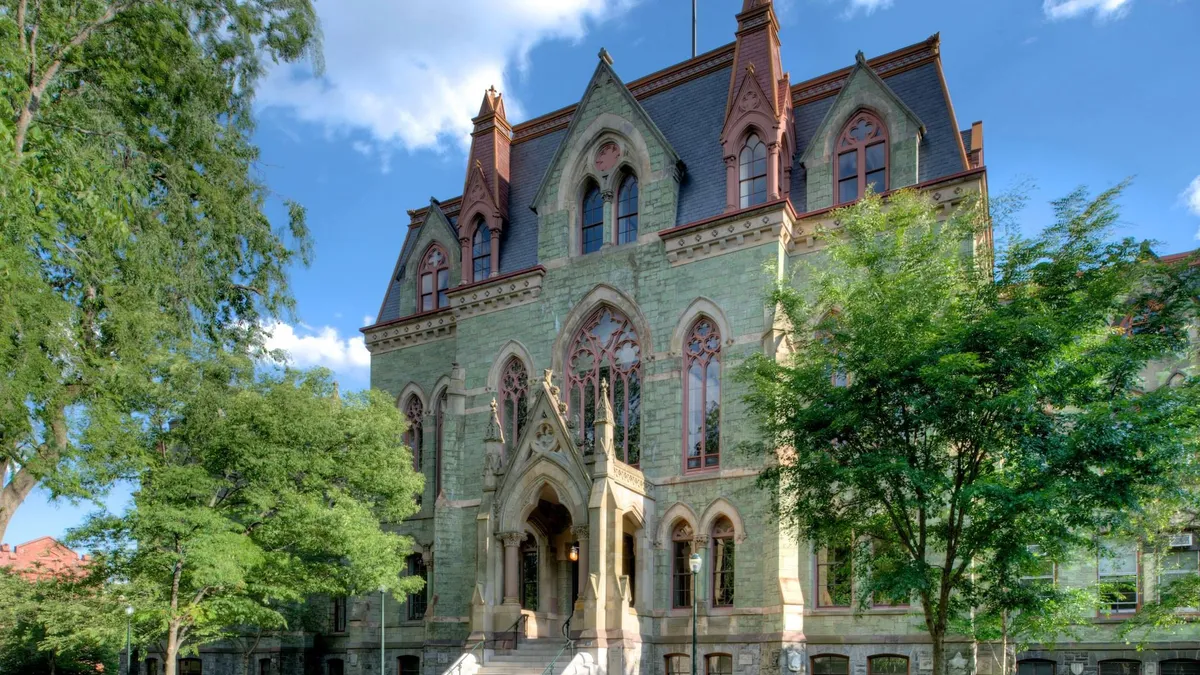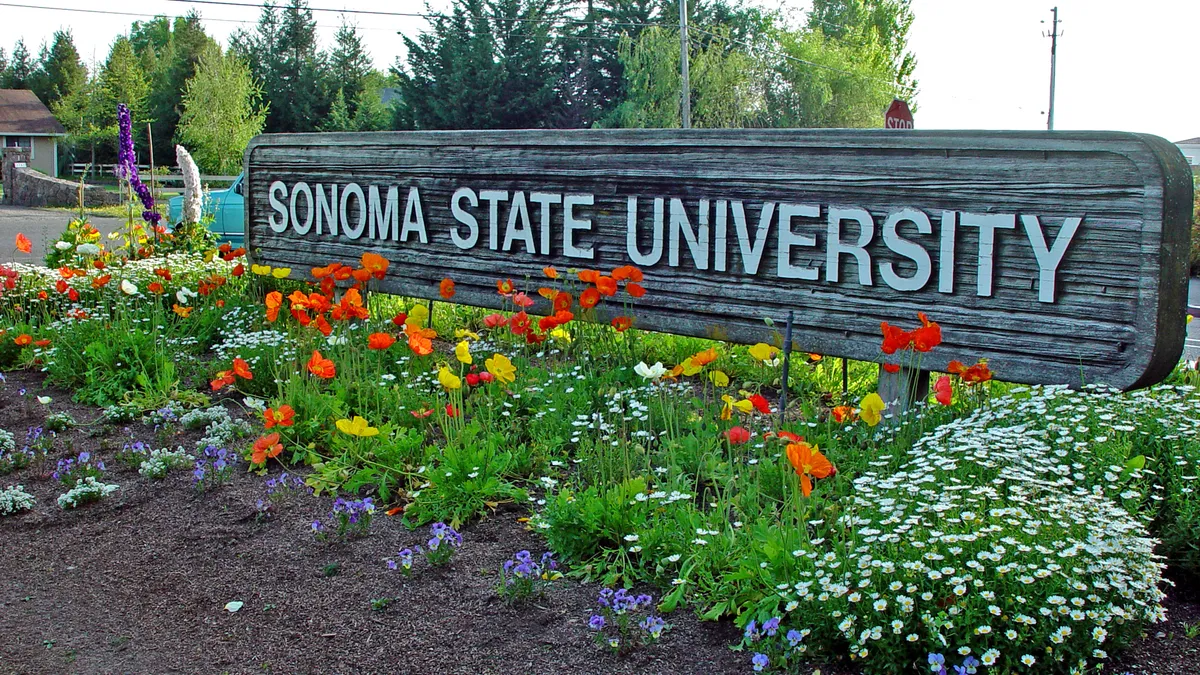Over the summer, Whitney Soule, a University of Pennsylvania vice provost and dean of admissions, began discussing with colleagues how the Ivy League institution manages students’ enrollment deposits.
A mainstay of the college-selection ritual, enrollment deposits require admitted students to put down a few hundred dollars or less to signify their intent to enroll and lock in their seats for the coming term. This money then applies to their tuition bill.
Mandated deposits help colleges map out their incoming classes — and thus their budgets — as students theoretically are less likely to renege on attending if they already contributed some cash. Students do back out, though, sometimes because they have pledged multiple deposits.
Soule said she remembers her summer conversations evolving into questions: Why are deposits still happening at Penn? Do we need them?
The answer to the second question is apparently no.
Penn will not ask for a deposit starting with students enrolling in fall 2023. Instead of fronting a $400 deposit, students will not pay anything toward tuition until their first-term bill arrives. Students also do not pay housing deposits. The move puts Penn's practices in line with several of its Ivy League peers.
The decision is equity minded, Soule said. Most incoming Penn students can afford the down payment, no problem. But for a slice of enrollees, a deposit can strain their finances, some to the point where they need it waived.
Soule hopes this approach will ease these students’ transition to Penn.
Of course, an Ivy League campus brimming with wealth has less financial fallout to fear if students who at first commit ultimately don’t enroll, a phenomenon known as summer melt.
Penn’s endowment totaled nearly $21 billion as of the end of June.
And now while no Penn student has to send in an enrollment deposit, the low-income students who stand to gain the most from the policy don’t attend Penn in extremely high numbers. Less than 20% of first-time, full-time undergraduates in 2020-21 received federal Pell Grants, and 11% took out federal student loans, according to the most recently available federal data.
Still, for Soule, the change is a reminder to continually reexamine what administrators may perceive as staples of the admissions process that can be undone. And this shift can enormously benefit some students, she said in a recent telephone interview.
“I want it so they might not realize that it has been taken off their plates,” Soule said. “If they didn’t have to ever worry about it, that’s the best goal. It’s not crossing something off the list. It never hit the list in the first place.”
A new attention to barriers
Most colleges say they want to lift up disadvantaged students and position them on the track to social mobility.
However, the racial reckoning in the U.S. started by the 2020 police killing of George Floyd has heightened these concerns and spurred higher education to take a sledgehammer to admissions and enrollment barriers.
In January, two major higher ed associations published a report urging simplification of admissions procedures. The fewer steps to applying and enrolling, the more equitable the process, they argued.
The National Association of Student Financial Aid Administrators and the National Association for College Admission Counseling in that report also endorsed scrapping fees, like those associated with applications.
Colleges can forgo that fee for some students, and they often do. But even the act of students “proving they are poor” presents problems that disproportionately harm those from racial minority backgrounds, the report states.
Doing away with an enrollment deposit is “in the same vein as the ending of application fees,” according to Nikki Chun, the University of Hawaiʻi at Mānoa’s vice provost for enrollment management, who formerly led undergraduate admissions at the highly selective California Institute of Technology.
She said such moves are part of higher ed’s mission of diversity, equity, inclusion and justice, or DEIJ.
“Families who don't have ready access to these funds end up falling further behind in the enrollment process,” Chun said in an email. “And that phenomenon is counterproductive to the DEIJ-oriented work that many of us are here to do.”
Penn’s admissions shift sprung from “intentional conversation” among staff in Soule’s office, she said. They consistently try to pinpoint and alleviate areas of friction in applicants’ admissions journey.
In the case of nixing the deposit, that meant checking in with other university departments, like financially related ones, to understand how they’d be affected, Soule said.
She said she understood the logic that requiring deposits, which has “always been” at Penn, might incentivize students who've committed to enroll.
“But we don’t have evidence that it actually does,” she said.
Soule said students have opted for another college even after sending the deposit. And Penn wants to form bonds with students, which doesn’t entail them paying this particular sum.
About 20% of Penn’s enrolling students use a deposit waiver, Soule said. And about 30% of prospective students have their application fees waived.
Penn counted 2,417 first-year students for fall 2022.
Where else is this happening?
Brown University is also among the institutions not mandating enrollment deposits, spokesperson Brian Clark said in an email. He said the university doesn’t want that financial burden to prevent students and their families from deciding on Brown.
“And we lose very few students between May 1 and the start of fall classes, outside of circumstances like gap years,” Clark said. May 1 is historically the national deadline by which many students pick a college.
Harvard and Yale universities also do not demand an enrollment advance, their spokespeople confirmed in emails. They did not specify when their institutions dropped deposit requirements.
Cornell University, meanwhile, still has a $400 deposit, spokesperson Rebecca Valli said in an email. The remaining Ivy League institutions did not respond to requests for comment.
Some public institutions have banished enrollment down payments as well, Nathan Mueller, principal and managing director of advanced analytic services at consultancy EAB, said in an email.
But those colleges, some of which EAB works with, have “somewhat less reliability” in the number of students who confirm their enrollment, Mueller said.
“Perhaps Penn trusts their processes enough to believe they will still be able to know who’s coming without the deposit,” he said.
Statistics about how many high school graduates fall away in summer melt fluctuate according to different pieces of research, but estimates come in at least at 10%.
But like Brown, Penn has little to fret about shedding students. About 25 students who commit to the university end up not joining the campus every year, Soule said.
Therein lies the financial rub for most institutions. Only a slim band of wealthy institutions consider enrollment stable enough to remove that admissions roadblock, Chun said. That group includes her former institution, CalTech.
“These decisions are a precarious balance of being student-centered while also serving business operations needs,” Chun said. “I think this is why we don't see more of these moves; these are highly complex decisions that require balancing myriad priorities. Perhaps when we see more institutions making these moves, we will have better models to follow.”
What’s on the horizon
Those who work with low-income students and their families across the country have frequently discussed the enrollment deposit question, according to David Hawkins, chief education and policy officer at NACAC, the admission association.
He noted in an email that the cost of the deposit can eclipse an application fee “by several orders of magnitude.”
In addition to the many colleges that grant leeway on the deposit, NACAC several years ago built its own program to fund waivers.
Colleges that can’t afford to jettison their enrollment deposits completely should work with individual students so they’re aware of possible waivers or reductions, said Aaron Ray, director of opportunity programs at Hamilton College, a private liberal arts college in New York.
Ray acknowledged many institutions, especially tuition-dependent ones, rely on enrollment deposits to project their classes and budgets. But he said he’s seen enrollment deposit waivers and reductions make a big difference to some students.
He recalled one student who he worked with at Union College, in New York. She had her deposit reduced to $50 and broke down in tears in front of him because she no longer had to pass the cost on to her family, he said.
“For those who grow up in poverty, for those where college seems like it’s not a possibility because it’s so, so expensive, it absolutely makes a difference,” Ray said.
Clarification: This story has been updated to reflect that the student Aaron Ray worked with on an enrollment deposit reduction attended Union College, in New York.





















